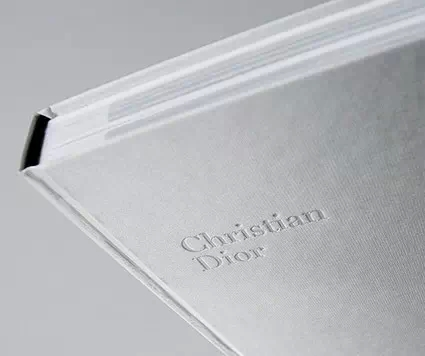What are the nine types of printing processes?
With the development of digital technology, online publishing and the emergence of e-books, some people prefer e-book reading, but many people still retain the reading habit of paper books. The unique book printing and binding design and printing process give everyone a real touch, which is the charm of paper books.Please follow my article to find out what are the nine types of printing processes.

9 types of book printing processes
Nine commonly used book printing processes are: bronzing process, laser hot stamping, lamination process, die-cutting process, partial UV, embossing process, embossing process, edge brushing process, and laser hollowing out.
1. Bronzing process:
The bronzing process uses the principle of hot-pressing transfer to transfer the aluminum layer in the anodized aluminum to the surface of the substrate to form a special metal effect. Because the main material used for bronzing is anodized aluminum foil, bronzing is also called anodized aluminum hot stamping.
The hot-stamped metallic luster has strong decorative effect and strong visual impact.
2.Laser hot stamping:
Laser hot stamping is the process of transferring the laser pattern on the anodized aluminum to the substrate by using the effect of temperature and pressure.
The characteristic of the laser hot stamping process is that the brush products can show different colors with the change of the observation angle, with obvious dynamic discoloration effect, and can produce a rainbow ring effect under the concentrated light.
3. Lamination process:
Lamination is also known as over-glue. The lamination process has strong protection, protects the printing color from scratches and enhances the toughness of the printed product. The surface of the book cover after lamination is smooth and bright.The lamination process is very common in custom hardcover book printing.
According to the different film materials, it is divided into bright film, matt film, pearl film and touch film.
4.Die-cutting process:
Usually the die-cutting process is a technology that combines the die-cutting knife and the crimping knife in the same template to hollow out the shape of the material.
Root die-cutting allows all kinds of printed packaging to be presented in three-dimensional and curved lines, creating a variety of shapes and shapes that are more beautiful, delicate and full of creativity.
5. Local UV:
The UV process is to cover the surface of the printed matter with UV ink to produce different bright effects, which is widely used in book printing china.
The UV process makes the printed matter show higher brightness, transparency and wear resistance locally. The surface of the printed matter after partial UV treatment has a more textured and three-dimensional sense, highlighting the visual effect of local light.
6.Embossing process:
The embossing process is to use negative (concave) and positive (convex) molds to perform artistic processing on the surface of the printed matter.
Applying pressure from the front of the paper to indent the surface is called a "dimple". Indentation is to use a single metal plate to press the graphic content of the thicker paper into it to form a unique concave feel.
7. Concave process:
The bumping process is one of the commonly used techniques in the post-printing process. The process of applying pressure from the back of the paper to make the surface swell is commonly known as "bumping"; the purpose of this process is to increase the layering of the overall structure.
The raised text on the cover in the picture uses the plain concave printing process, which can present the raised figures or texts delicately, neatly and cleanly, showing a unique punching process.
8.Brush edge process:
The edge brushing process is to use manual or digital technology to print different colors or graphics on the edge of the book.
The edging process includes:
(1).Gold edging is hot stamping of various colors on the side;
(2).Color spraying;
(3).Silkscreen (screen printing colors on the side, including color patterns).
9.Laser hollowing process:
Laser hollowing is to use the high energy density characteristics of the laser to irradiate the surface of the product, cut the processed product through and produce a certain hollow pattern effect.
The circular or right-angle die-cutting processing of traditional post-press processing has limited processing accuracy, while the use of laser engraving can achieve many special graphics and greatly improve the accuracy of the product. Laser cutout makes prints artistic.
Above are the nine commonly use processes in china printing service.Different kind of printing projects,the printing process is different.
Chinaprinting4u is a good choice for self-publisher to custom their best book printing services, who have more than 20 years of experience in printing industry.At chinaprinting4u,the experts will give you best idea and reasonable price to print your project.
评论
发表评论